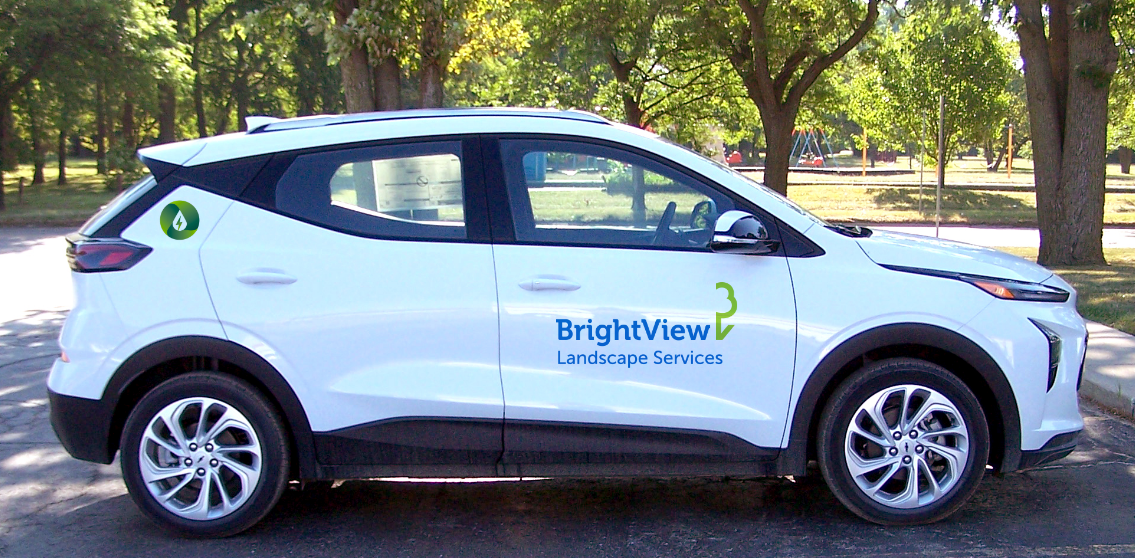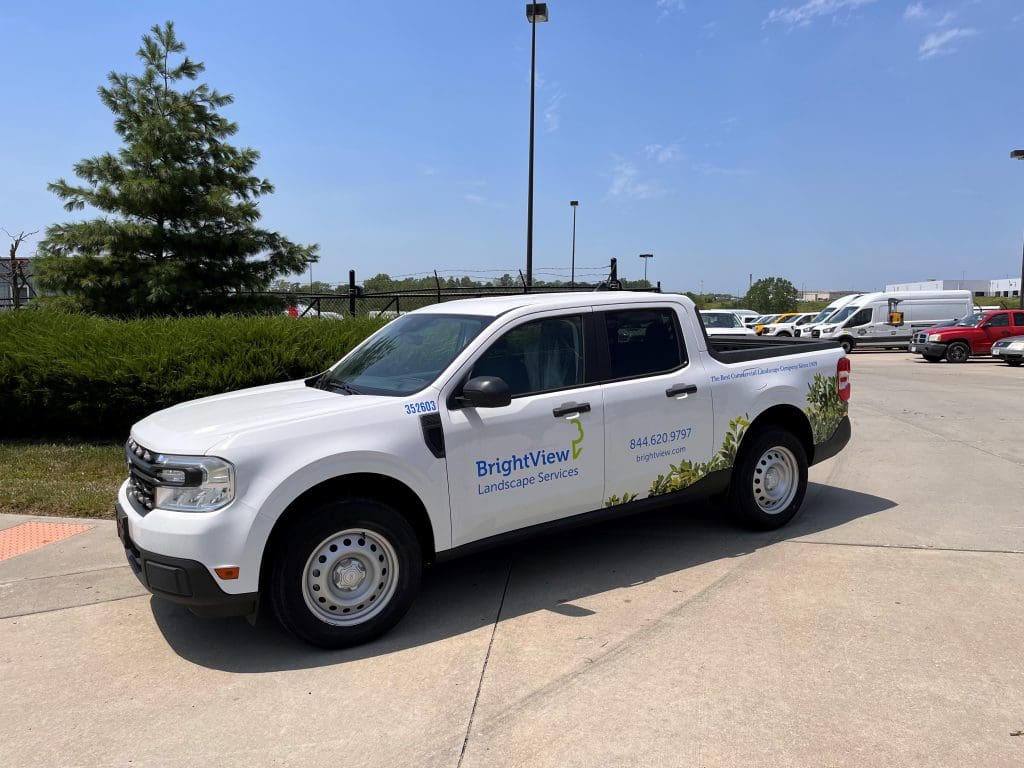
Has your lawn or landscape company been mulling over the feasibility of adding electric vehicles (EVs) to your fleet? Much like the electrification of handheld equipment and mowers, there’s more to this process than simply swapping out your gas vehicles for electric models.
“Speaking to fleet managers or operations managers at landscape companies, one thing I hear often is that they all feel like they’re behind with their electrification plans,” says Bri Perry, product marketing manager at Fleetio. “However, a lot of companies are just starting to get one or a few EVs or are just now creating plans to acquire them at the end of 2024 or 2025. There’s a lot of pressure for fleet managers to have the right answers when it comes to the perfect time to add EVs to their fleet, but outside factors like supply and regulations may cause hiccups for even the most well-laid plans.”
Why Add EVs
Part of the reason you may be uncertain about adding EVs to your fleet is wondering if there are any real benefits in doing so.
BrightView, based in Blue Bell, Pennsylvania, is currently converting their fleet of about 2,400 management vehicles to electric and hybrid models, with 90% switched over by 2030. In their 2022 FY, BrightView added about 400 hybrid/electric vehicles.
“The company as a whole wants to be recognized as doing the right thing for the environment,” says Holger Arnold, senior vice president of operational excellence/risk for BrightView.
Perry says all signs point toward an electric future in the fleet industry and a business’s commitment to sustainability can be a major decision factor for customers.
Arnold says the main benefits of the EVs have been lower carbon footprint, fuel savings and less maintenance. He says their workforce likes driving the EVs as well.
Determining a Fit
Arnold says they understand they are at the very beginning with EVs and they will encounter different challenges and opportunities, but BrightView is ready to get started and learn.
“We’re very efficient with what we do with our current equipment,” Arnold says. “How do we stay that efficient? Can we still do those same types of things?”
BrightView is also piloting the conversion of a F-250 from internal combustion engine to battery power.

“They’ve built us a truck that we’re working through some of the pulling capacity around the drive motors,” Arnold says. “We also have a trailer that we retrofitted for the purpose of, ‘Hey, let’s see what happens. Let’s go ahead and build it.’ The idea would be we have the F-250 with the trailer and then electrical equipment and then we can start running it and just get a feel for what would it look like if we were electric?”
While being more sustainable can be an influential factor to transition your fleet to EVs, Perry says that EVs still need to make financial sense for your operations. Perry advises performing an asset cost analysis to determine the true cost of EVs.
“Capturing every cost associated with an EV is key,” Perry says. “Since fuel (energy) and maintenance costs differ with EVs, it’s important to also track any registration fees specific to EVs, insurance costs, etc. It’s also good to track and digitize documents related to grants and incentives for operating EVs. Having a source of truth for all relevant costs and services will help you capture the true total cost of ownership.”
Once you have this data, you can compare the cost of your gas vehicles to see what cost savings you are experiencing and plan better for the future. Perry says it’s critical for fleet managers to understand the cost of going electric and identify ways to reduce those costs through experimentation and learning from the fleet community.
Perry adds that centralizing your EV and internal combustion engine (ICE) vehicle data allows you to compare and customize reports based on shifting metrics.
“Even a spreadsheet or simple report can help uncover how EVs performed in different seasons, the true costs for charging (plus infrastructure needs for future EV additions), and if EVs are operating on the right routes,” Perry says.
Drawbacks of EVs
The biggest drawback for the EVs that BrightView has experienced is the lack of infrastructure to charge the vehicles. Not all the buildings they work at have the capacity to charge EVs. Arnold says they’ve also learned they get a little less mileage driving on the highway in Florida. As a result, BrightView is installing charging stations to accommodate their growing EV fleet.
Perry says charging uncertainty is the number one concern when it comes to electrification.
“In the U.S., access to public charging is still limited in rural areas and driving distances are often greater than in cities,” Perry says. “While there are helpful resources out there, electrification is still new for a lot of fleets, and with the increased constraints on budgets, deciding on whether to adopt EVs comes down to infrastructure.”
Arnold expects this issue to improve as brands like Ford and Tesla partner to provide more charging stations.
Perry says outside of OEM best practices on charging, EVs add a new layer of complexity to routing.
“Depending on where vehicles are kept and how far away job sites are, it’s possible to get by with overnight charging policies,” Perry says. “However, if drivers are charging vehicles at home and have to stop by headquarters to get equipment before starting off for the day, it’s possible the crew may have to plan and stop at a charger between jobs.”
Another issue hindering the adoption of EVs includes the availability of the vehicles themselves as well as experienced drivers and technicians.
“There’s a cost component to training drivers on things like regenerative braking and finding technicians or shops with EV maintenance experience,” Perry says.
Arnold encourages other landscape companies considering electrifying their fleets to go with a blend of hybrid and EVs right now.
“It’s been positive,” Arnold says. “It’s been a learning curve, but we’ll see what happens here in the next couple of years. We’re going to keep going.”



